Talapus & Olallie Lakes Trail
When it comes to hiking in Washington State, there are plenty of options to choose from. One popular trail for hikers of all skill levels is the Talapus & Olallie Lakes Trail within the Alpine Lakes Wilderness. This hike takes you on up a steady incline through the Mt. Baker-Snoqualmie National Forest, offering spectacular views of the surrounding mountains & lakes.
If you’re planning a hike on the Talapus & Olallie Lakes Trail, there are a few things you should know before you go. The trail has a moderate grade with various terrain from muddy, narrow sections to rocky ascents. While this may sound challenging for some, the path is well-maintained & clearly marked, making it easy to navigate for hikers of all skill levels.
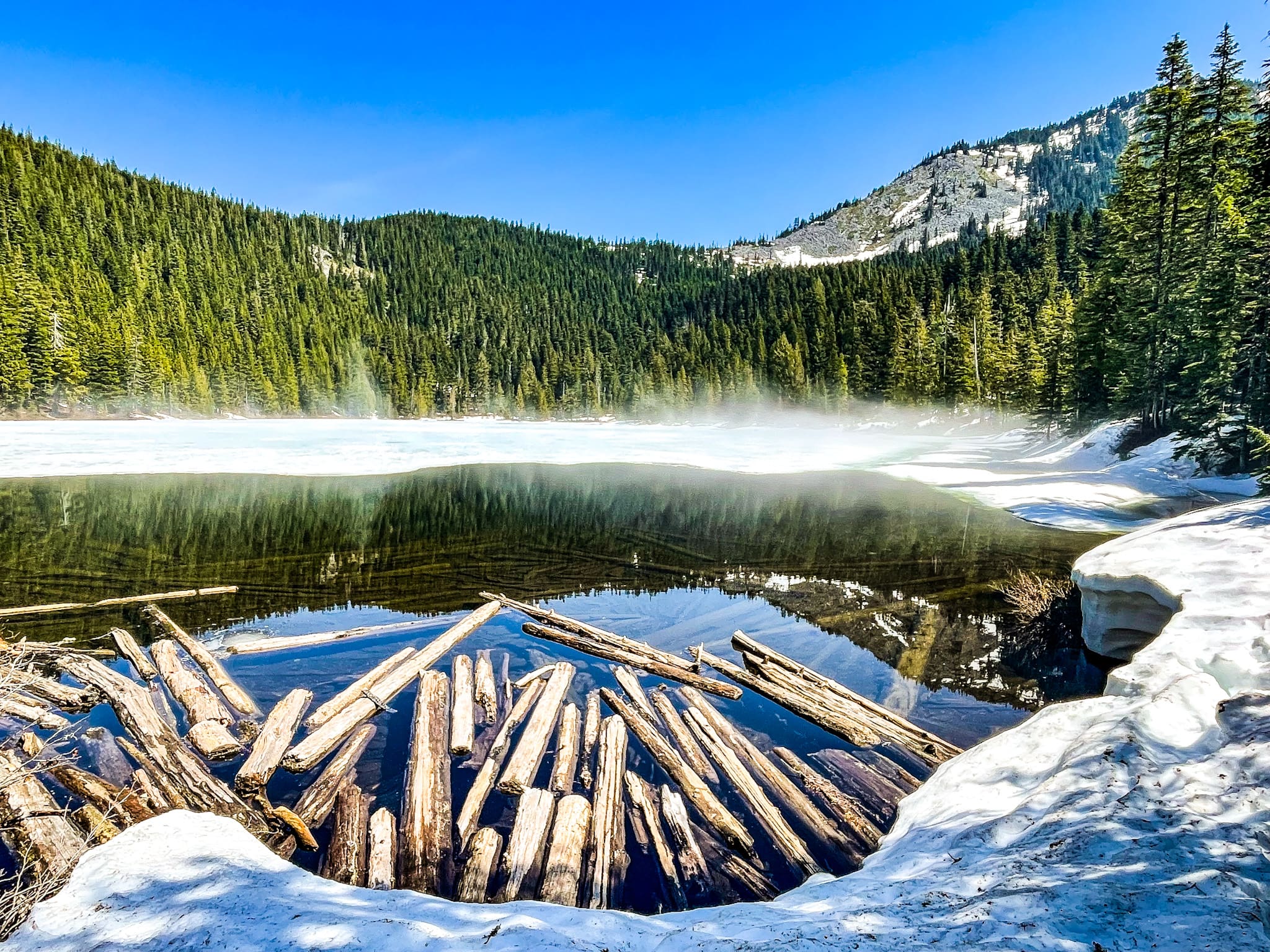
Please note: This post contains affiliate links.
This means that, at no extra cost to you, I may receive a small commission if you make a purchase through my affiliate link.
You may read my full disclosure policy here.
Quick Trail Stats for Talapus & Olallie Lakes Trail
📈 AllTrails rating: Moderate
🥾 Length: 5.7 miles RT
🏔️ Elevation gain: 1,223 feet
✅ Northwest Forest Pass required
🐶 Leashed dogs are welcome
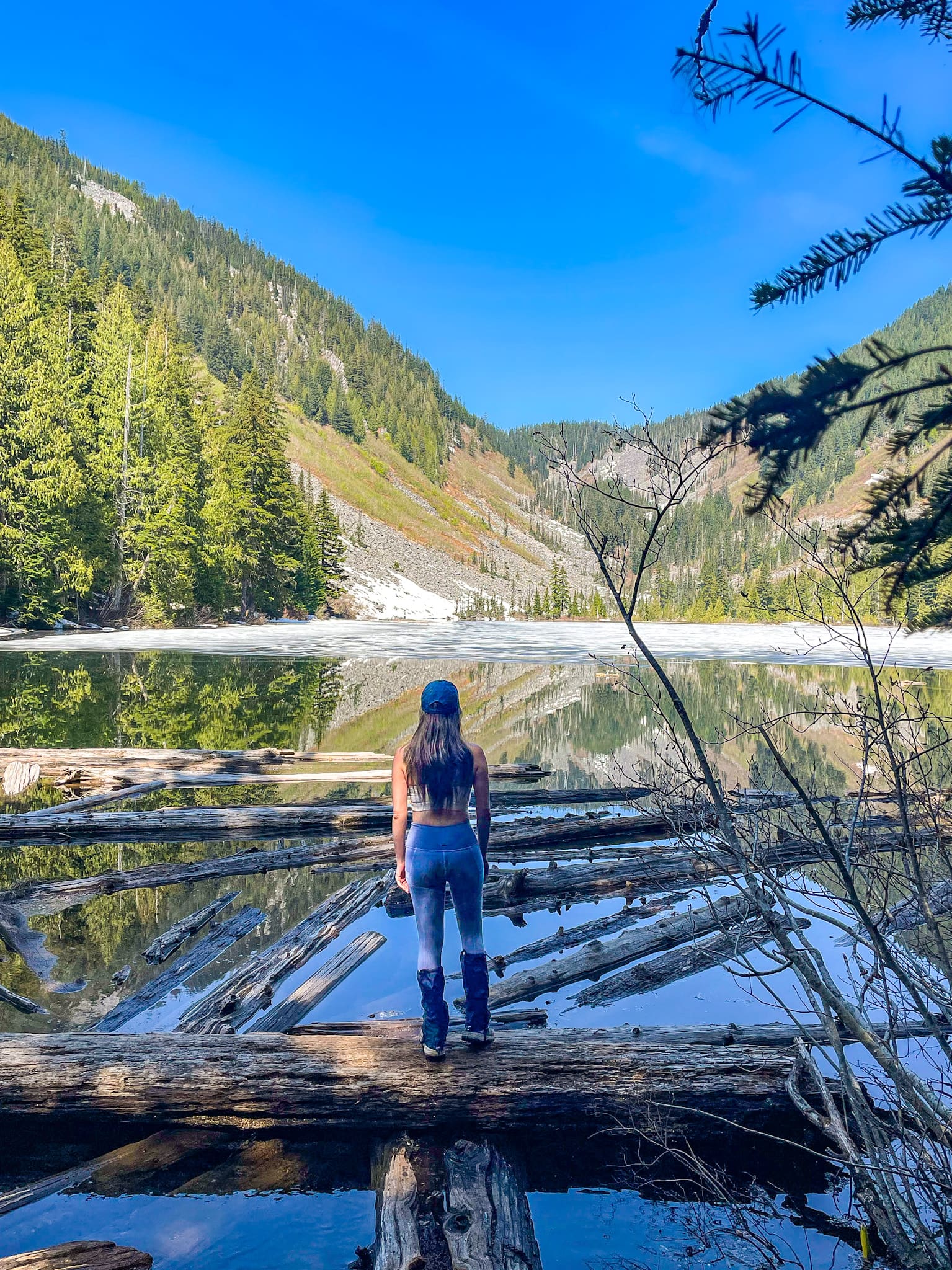


How to Get to Talapus & Olallie Lakes Trailhead
The Talapus & Olallie Lakes Trail is located in the Snoqualmie Pass area, about an hour’s drive east of Seattle on the I-90 freeway. As soon as you reach Exit 45, turn left onto Forest Road 9030 & drive for 2.5 miles until you reach the trailhead. The road starts off nicely paved but soon turns into loose gravel with lots of potholes. Because of the area’s remoteness, this road leading up to the parking lot often closes during icy winter months. Therefore, don’t forget to check conditions ahead of time before your departure!
It is also worth noting that parking at the trailhead can be limited, so be sure to arrive early in the morning to secure a spot. For those who had a long drive, there are portable toilets here for your convenience. As an alternative route, you can park at the nearby Mason Lake trailhead & hike an additional 2.5 miles to reach the Talapus & Olallie Lakes Trail.
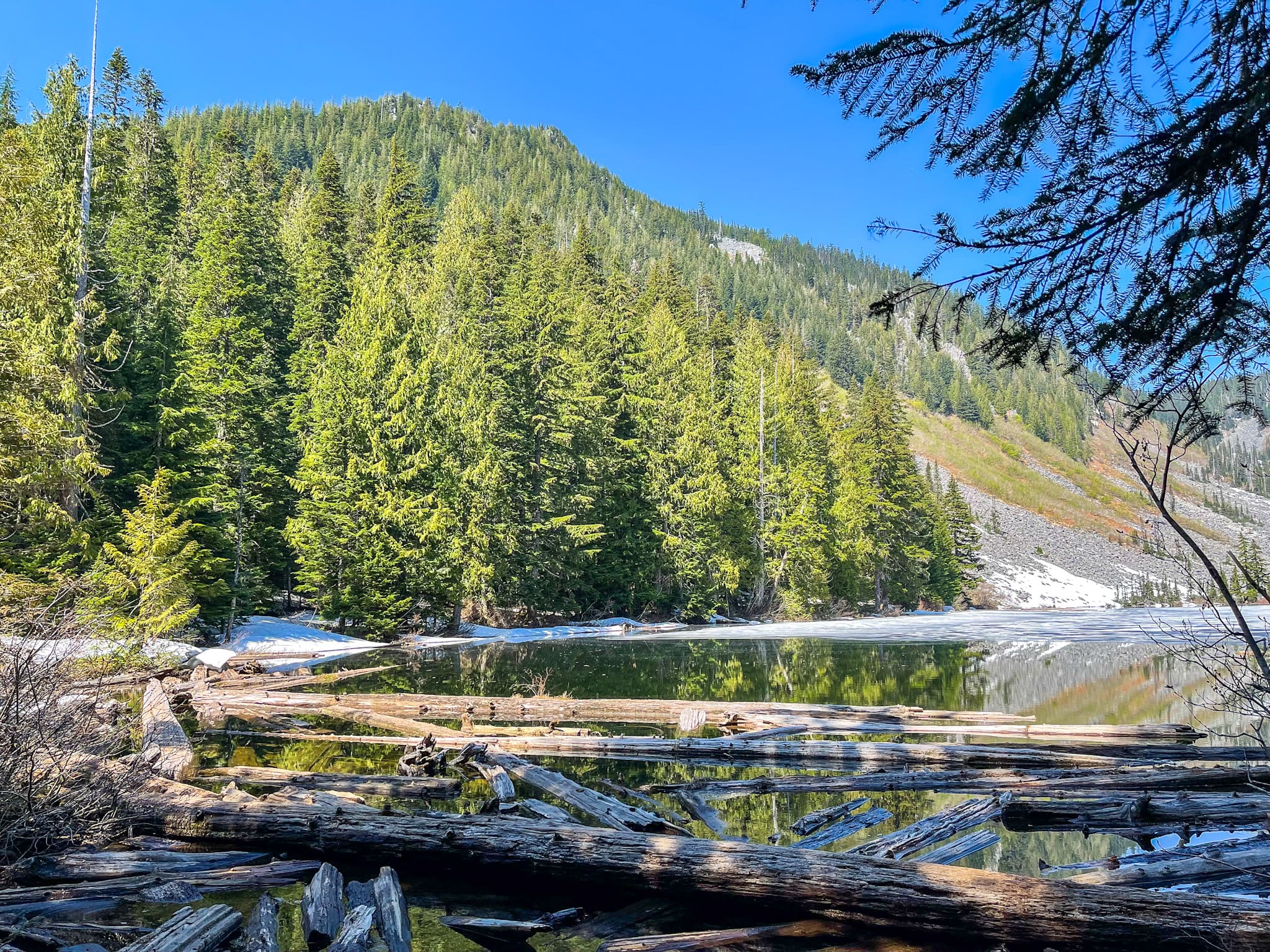
Take in the Natural Beauty of Talapus & Olallie Lakes
The trail begins with a gentle climb through a lush forest, providing a peaceful & serene start to the hike. The first half follows through a dense forest of tall cedars & hemlocks. As you trek along Talapus Creek, the trail gradually steepens & challenges you with several switchbacks for about 1.8 miles to the first Lake, Talapus. This is a good spot to take a break & admire the amazing alpine scenery with Bandera Mountain in the background. There is a log jam here that makes a great photo opportunity as well. Just be careful as it can get really slippery balancing on the old fallen trees!
For those who want to continue on to Olallie Lake can keep to the right for another 1.2 miles. At the junction, hike a slightly steep grade of about 0.2 miles & the second alpine lake will appear on your right.
In warmer seasons, the trail is home to a diverse range of wildlife & vegetation, making it a must-visit for nature lovers. The forest is full of towering trees, lush ferns, & vibrant wildflowers, providing a picturesque backdrop for the adventure. During your hike, you may encounter a variety of birds, including the Pacific wren, chestnut-backed chickadee, & Steller’s jay, which tend to be very fearless around humans. You may also spot several small mammals frolicking in the wild such as squirrels, chipmunks, & rabbits.
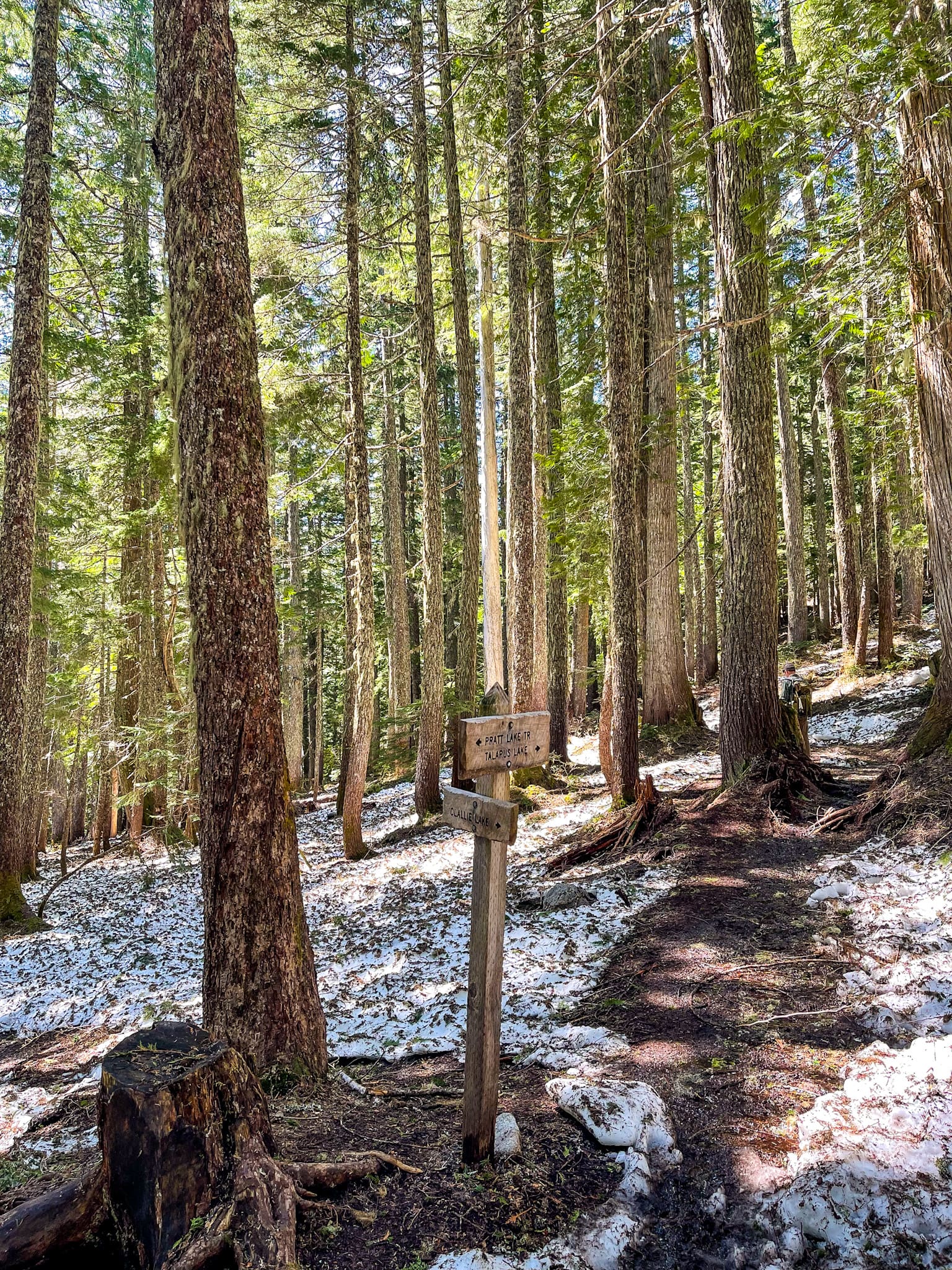
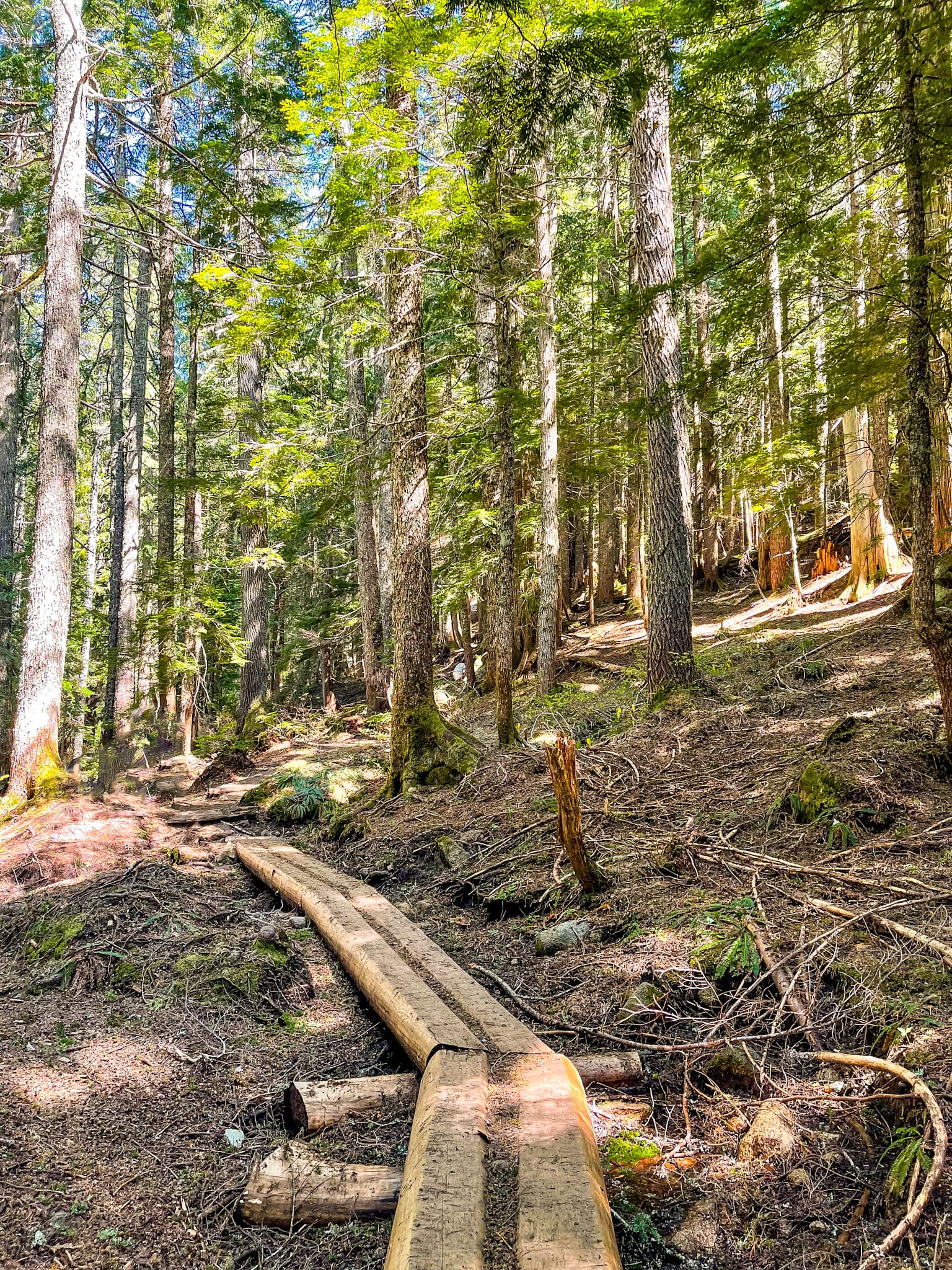
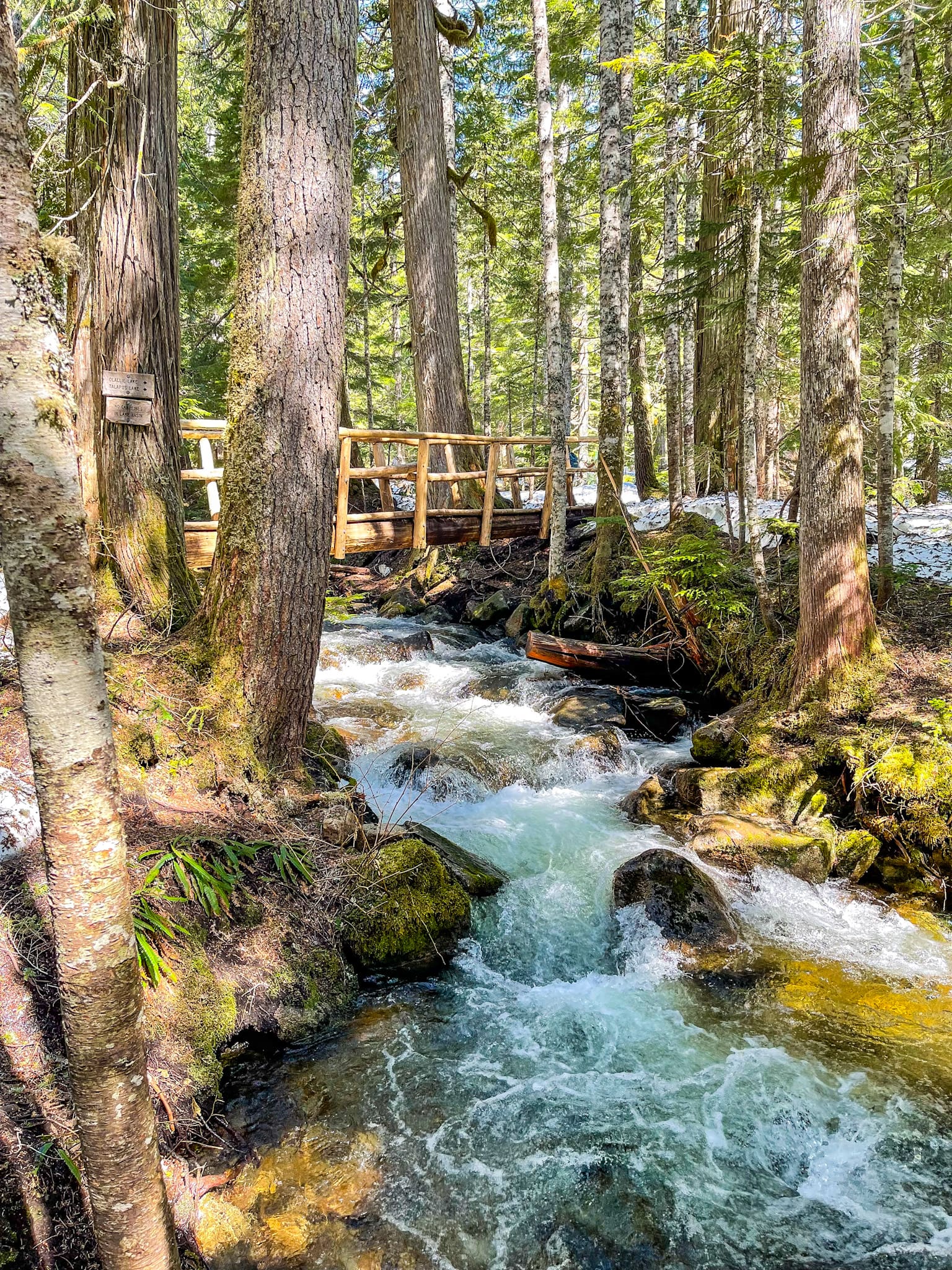

A Well-Maintained Trail with Signs & Markers
The Talapus & Olallie Lakes Trail has clearly defined blue diamond markers along the route making it easy to navigate. In addition to the markers, there are signs at major junctions that provide clear directions & distances to various destinations.
You may come across fallen trees & depending on the time of the year, trail wash-outs. The Washington Trails Association continuously works to improve the hiking experience by restoring the route & preserving the environment. Please keep this in mind as you stay on the trail. Additionally, I recommend bringing a map or downloading one on your phone. There are a few places where the trail splits off in different directions & it can be helpful to have a visual reference to make sure you’re on the right track.
Camping at Talapus & Olallie Lakes Trail
Talapus & Olallie Lakes Trail is the perfect introduction to the beginning backpacker. For those interested in camping, you can find a nice secluded site just before crossing Talapus Creek at about 1.5 miles in. At Talapus Lake, there are 14 primitive campsites available on a first-come, first-served basis. Each site has a fire ring & picnic table, but there are no toilets or running water available. As always, remember to pack out all trash & waste.
Further up, Olallie Lake has 19 campsites available, also on a first-come, first-served basis. These sites have similar amenities to those at Talapus Lake, but there is a pit toilet available for use.
A Wilderness Permit is required for overnight camping on the trail. These permits are free & can be obtained at the trailhead or the local ranger station. Additionally, camping is only allowed in designated campsites & fires are not permitted outside of established fire rings. It is important to properly dispose of all trash to help preserve the natural beauty of the area. Also note that bears are active in the area, so it’s crucial to store all food & scented items properly in bear canisters to avoid attracting wildlife.

Packing List for Talapus & Olallie Lakes Trail
- Headlamp
- Handheld GPS system
- Hand warmers
- First aid kit
- Protein-filled snacks & water in a refillable bottle
- Portable backpacking stove
- Hiking daypack to carry all your gear
- A map & fully charged phone in case of emergencies

Angella’s Travel Tips
- As with any outdoor activity in the Pacific Northwest, you want to prepare for the unexpected. Before you head out, check recent trail reports & weather updates to ensure a safe & enjoyable experience.
- Talapus & Olallie Lakes Trail is accessible year-round, but the best time to visit is between July & October. During this time, the weather is milder & the trail is less muddy. It is also less crowded during weekdays than on the weekend, making it more enjoyable for a peaceful escape.
- In the winter, check avalanche conditions before trekking out as the trail has some steep slopes that can pose a risk. To continue on to Olallie Lake in the winter, you may need a navigation system to help guide the way as the trail becomes difficult to follow when a lot of snow is present.
- In an effort to preserve the wild in our ‘wild’erness, it is important to be conscious of the effects our actions may have on public lands, the animals, & even other nature enthusiasts. The 7 Leave No Trace principles provide a framework for enjoying the outdoors while leaving the smallest footprint possible. Learn more about how you can apply the Leave No Trace principles on your next adventure to help protect the beautiful places we all love so much.


Leave a comment